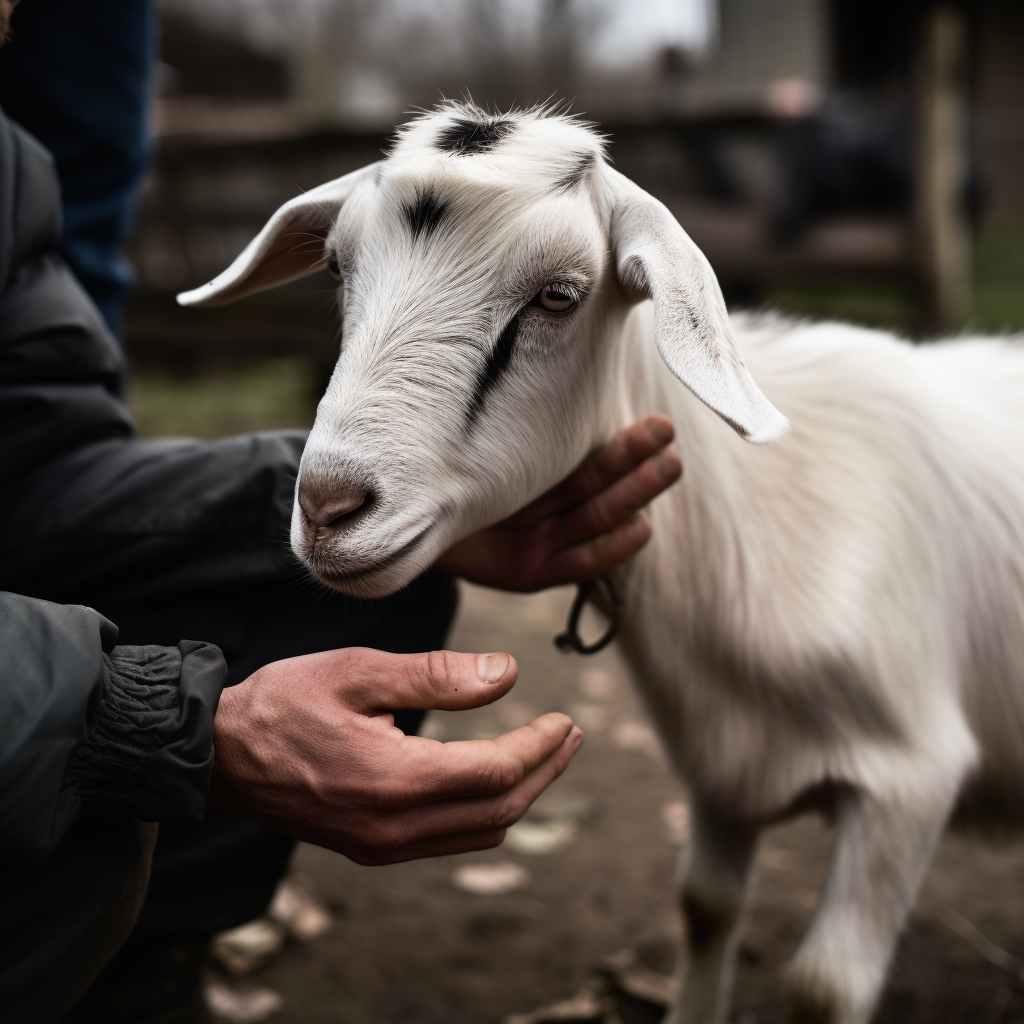Disbudding is an important procedure in goat husbandry that involves the removal of horn buds from kids. It is a preventative measure undertaken to avoid potential injuries and ensure the safety and well-being of both kids and handlers.
This article will explore the question, “When is it too late to disbud a goat?” and provide valuable insights on the ideal timing, potential risks, and alternative options for screw-horn.
Understanding Disbudding

Before delving into the question of timing, let’s clarify what disbudding entails? It is the process of removing the horn buds from a k, typically within the first few weeks of its life. This procedure is carried out to prevent the growth of horns, which can lead to various issues, including injuries, aggression, and dominance within the herd.
Why Should I Disbud a Goat?
Is it Too Late to Disbud a Goat? Here’s what you should know about the importance of disbudding your goats:
- Disbudding helps ensure the welfare of animals by preventing potential injuries..
- Screw-horn can unintentionally harm themselves or other members of the herd during playful interactions.
- Removing horn buds early on eliminates the risk of such injuries occurring.
- It contributes to improving overall safety.
- Horns can pose hazards to handlers during routine tasks like feeding, milking, and grooming.
- Without horns, kids become easier to handle, reducing the likelihood of accidents and injuries.
- It plays a role in herd dynamics.
- Screw-horn often exhibit more aggressive behavior and can dominate other members of the herd.
- Removing the horns promotes a more harmonious and peaceful herd environment.
When to Dehorning Goat?
The ideal age for dehorning is within the first two to four weeks of life. During this period, the horn buds are still relatively small and easier to remove, leading to a higher success rate with minimal pain and stress. Timing is crucial, as delaying trimming horns can complicate the procedure and increase the risks involved.
When Is it Too Late to Disbud a Goat?

Determining when it is too late to disbud an animal depends on various factors. The critical period for It is generally within the first few weeks of a does’s life. After this period, the horn buds begin to fuse with the skull and develop into more solid structures. Avoiding too late to dehorn an animal beyond this stage becomes significantly more challenging for them.
While getting rid of the horns on them is technically possible, it becomes a riskier and more complicated procedure. The horns may have started to grow, making it too late to dehorn and difficult to access and remove the bud without causing excessive pain and potential complications. The likelihood of regrowth is also higher, as the horn bud has already started to develop.
Alternative Options for Horned Goats
- Introduce polled caprine breeds: This involves adding caprine breeds to your herd that naturally lack horns, eliminating the need for disbudding.
- Horn tipping: This procedure involves removing the tips of the horns and can be performed on older goats. It is less invasive than clip horns but doesn’t eliminate the risk of injury entirely.
- Dehorning: This option is suitable for mature animals with fully developed horns. It involves the complete removal of the horns under anesthesia and should be performed by a skilled veterinarian. It is a more involved and potentially riskier procedure compared to disbudding.
How Long Is the Goat’s Healing Time from Dehorning?
Is it Too Late to Disbud a Goat? After disbudding, goats go through a healing process that generally takes a few weeks to a month. During this time, it is essential to provide proper care and monitoring. The healing duration can vary depending on the animal’s age, overall health, and individual response to the procedure.
To promote healing, keep the horn tipping in a clean and comfortable environment. Apply appropriate topical treatments, as recommended by your veterinarian, to prevent infections and ease any discomfort. Monitor the healing progress closely and seek veterinary assistance if any complications arise.
Conclusion
Disbudding is a crucial practice in goat management that offers numerous benefits in terms of safety, herd dynamics, and injury prevention. The ideal time to horn tipping is within the first few weeks of its life. After this critical period, dehorning becomes increasingly challenging and carries more risk.
If trimming horns is not possible, alternative options such as introducing polled breeds or considering horn tipping or dehorning can be explored. Regardless of the chosen approach, it is important to prioritize the welfare and safety of your goats.
Is it Too Late to Disbud a Goat? Remember to consult with a knowledgeable veterinarian for guidance on the best course of action for your specific animals and circumstances.
FAQs (Frequently Asked Questions)
Can disbudding be done on adult animals?
Disbudding adult animals is possible but more challenging and risky. It is generally recommended to perform stopping the growth of the horns within the first few weeks of a goat’s life.
How can I promote healing after disbudding?
Provide a clean and comfortable environment, follow veterinary recommendations for topical treatments, and monitor the healing progress closely.
What tools are needed for dehorning a goat?
The primary tool for dis budding is a dehorning iron. Additionally, protective gear, such as gloves and goggles, may be necessary, along with a restraint device or assistance from another person.
